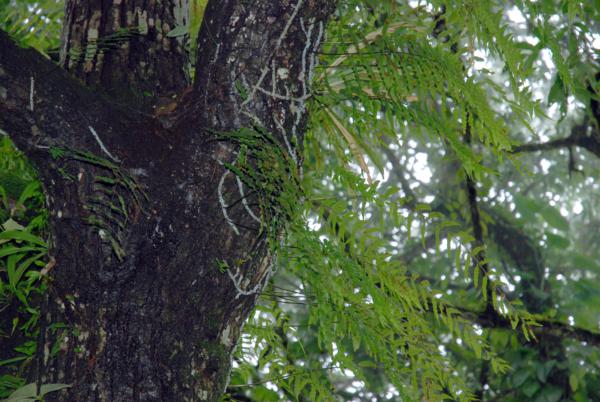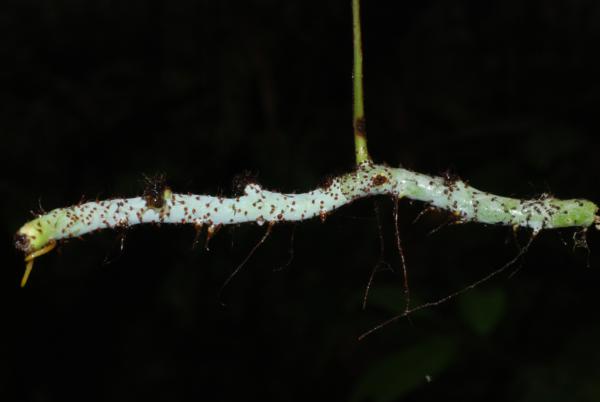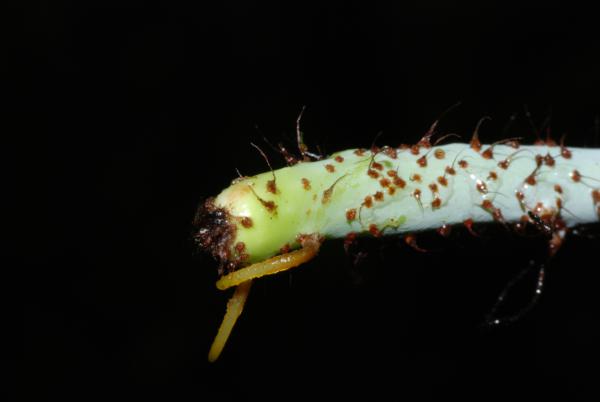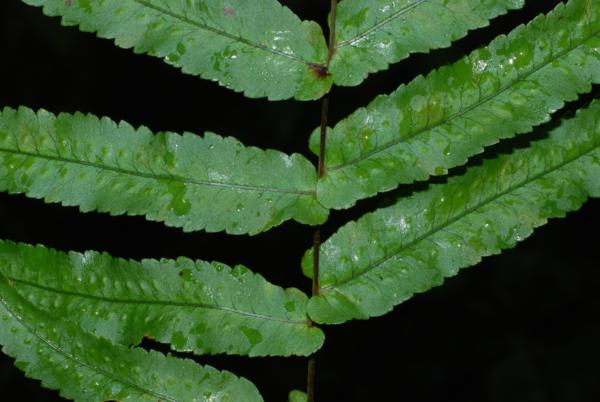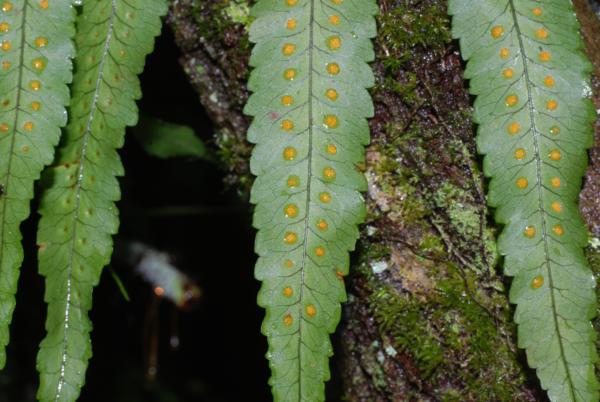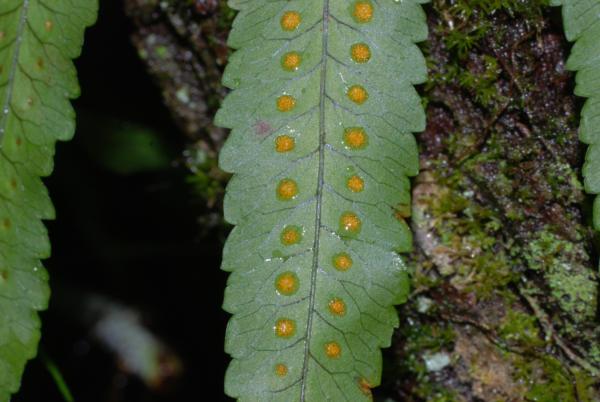
Goniophlebium mengtzeense (Christ) Rödl-Linder
Family
Polypodiaceae
Nomenclature
Goniophlebium mengtzeense (Christ) Rödl-Linder, Philipp. J. Sci. 116: 154. 1987; Rödl-Linder, Blumea 34: 404. 1990; Hovenkamp & Rödl-Linder, Fl. Males., Ser. II, Ferns and Fern Allies 3: 50. 1998. – Polypodium mengtzeense Christ, Bull. Herb. Boissier 6: 869. 1898. – Polypodium argutum var. mengtzeense (Christ) Christ, Bull. Acad. Int. Géogr. Bot. 20(1): 177. 1909. – Polypodiastrum mengtzeense (Christ) Ching, Acta Phytotax. Sin. 16: 28. 1978. – Type: Henry 10964B (P; iso K), Yunnan.
Polypodium argutum auct. non (J.Sm. ex Hook. & Grev.) Hook.: Tardieu & C.Chr., Fl. Indo-Chine 7(2): 537. 1941; Tagawa & K.Iwats., SouthE. Asian Stud. 5: 57. 1967; Tagawa & K.Iwats., Fl. Thailand 3: 572. 1989. – Goniophlebium argutum auct. non J.Sm. ex Hook. & Grev.: Tagawa & K.Iwats., Fl. Thailand 3: 572. 1989; Boonkerd & Pollawatn, Pterid. Thailand: 270. 2000.
Description
Rhizome long creeping, 4–5 mm diam., dark brown or slightly glaucous, densely scaly at least at apex; scales narrowly subtriangular, 1.7–3(–3.9) by 0.5–0.8(–1.1) mm, irregularly toothed at margin, light brown to blackish, clathrate. Stipes up to 20 cm long, stramineous or faintly castaneous, scaly at base, glabrous upwards. Laminae pinnate with distinct terminal pinnae, oblong-lanceolate, 20–50(–70) by 8–20 cm; rachis like the upper part of stipes, minutely scaly and hairy; free lateral pinnae up to 14 pairs, the basal one either reduced or the longest, the upper ones gradually becoming smaller upwards, slightly ascending, lower ones patent, straight or falcate, sessile to adnate, usually deeply cordate and more or less roundly auricled at base, attenuately acuminate at apex, serrate at margin, the lobes toothed, the larger pinnae 8–14 by 1–2 cm; terminal one usually longer, sometimes deeply lobed at basal portion, up to 16 cm long; veins anastomosing to form 1–2 rows of areoles at each side of costa, each costal areole usually containing a simple free veinlet although sometimes forked, the other veins free, ending inside the margin of lobes, visible on both surfaces; herbaceous, minutely and sparsely hairy beneath (hairs 2-5 celled, reported to be glandular), sometimes also minutely scaly beneath. Sori terminal on included veinlets of costal areoles, up to 2 mm diam., superficial or slightly sunken and then lamina slightly raised above.
Distribution in Thailand
NORTHERN: Chiang Mai, Lampang; NORTH-EASTERN: Phetchabun, Loei; SOUTH-WESTERN: Kanchanaburi, SOUTH-EASTERN: Chanthaburi.
Distribution in Laos
Salavan, Xieng Khouang.
Distribution in Cambodia
Kompong Speu.
Wider Distribution
Himalayas to China, Indochina, Taiwan and the Philippines.
Ecology
On mossy tree trunks or on moist mossy rocks in dense evergreen forests at high altitudes (1300–2200 m).
Proposed IUCN Conservation Assessment
Least Concern (LC). This species is widespread and not under any known threat.
Notes
Hovenkamp & Rodl-Linder (1998) describe soral paraphyses in this species but we have not seen these in Thai material.
Voucher specimens - Thailand
Middleton et al. 4471 & 4847, Chiang Mai, Doi Suthep-Doi Pui National Park (E); Suksathan 4427, Chanthaburi (QBG).
Habit
Rhizome
Tip of rhizome
Upper surface of frond
Lower surface of frond
Sori
Site hosted by the Royal Botanic Garden Edinburgh. Content managed by Stuart Lindsay, Gardens by the Bay, Singapore and David Middleton, Singapore Botanic Gardens. Last updated 24 January 2012
